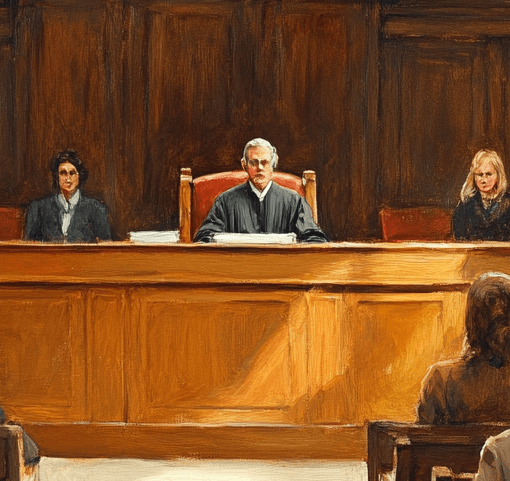Pleadings are the foundation of every civil lawsuit. They are the formal documents filed by both parties, plaintiff(s) and defendant(s), to set out their claims and defences. Without pleadings, there would be no structure to litigation, no clear issues to decide, and no way for the court to adjudicate the matter efficiently.
In this article, we will break down what pleadings are, why they matter, and what they typically include.
Pleadings are written documents that define the key issues in a lawsuit. They ensure that:
- Both parties know what they need to respond to.
- The issues in dispute are clearly set out.
- The court has a proper record of the case.
- The discovery process is guided by the claims and defences made in the pleadings.
Pleadings include the Statement of Claim, Statement of Defence, Reply, and other related documents such as Counterclaims, Cross-claims, and Third-Party Claims. These documents shape the lawsuit from the very beginning.
Pleadings are governed by Rules 14 and 25 of the Ontario Rules of Civil Procedure. Some of the most important rules include:
1. Identifying the Parties (Rule 14.06, Form 14A)
Every lawsuit must clearly identify the plaintiff(s) and defendant(s) in the Title of Proceedings section.
2. Statement of Material Facts (Rule 25.06(1))
A pleading must contain:
- ✅ Material Facts
- Key facts that support the legal claim or defence.
- ✅ Particulars
- Specific details necessary for clarity.
- ❌ No Evidence
- Proof is presented later in the case, not in the pleadings.
- ❌ No Conclusions of Law
- The pleading must set out the facts, not argue the law.
3. No Overstatement
A well-drafted pleading should be credible and professional, avoiding unnecessary dramatization. Courts dislike exaggerated claims and may strike out portions that are frivolous or vexatious.
- Statement of Claim
A Statement of Claim is the document that starts a lawsuit. It is filed by the plaintiff and must:- Identify the plaintiff and defendant.
- Explain the key facts supporting the claim.
- Clearly state the relief sought (e.g., monetary damages).
- If the action starts with a Notice of Action, the Statement of Claim must be filed within 30 days of the notice and served within 6 months.
- Statement of Defence
The Statement of Defence is the defendant’s response. It must be delivered within 20 days of being served with the Statement of Claim (or longer if served outside Ontario). The defendant has three main options:- Admit: Agree to certain facts in the Statement of Claim.
- Deny: Dispute the allegations made by the plaintiff.
- Claim No Knowledge: State that the defendant lacks sufficient information to confirm or deny certain facts.
- The defendant may also raise affirmative defences, which introduce alternative explanations of the events in dispute.
- Reply
A Reply is a document the plaintiff may file if the defendant introduces new allegations in the Statement of Defence.- The Reply must be delivered within 10 days of receiving the Statement of Defence.
- If the defendant has filed a Counterclaim, the plaintiff must respond within 20 days.
- Replies are not mandatory but can be useful when unexpected defences are raised.
Under Rule 25.05, the pleadings stage ends when:
- The plaintiff has replied to every defence (or the deadline for a reply has passed).
- Any defendant who has failed to respond has been noted in default.
At this point, the case moves forward to the discovery stage, where both sides gather evidence.
- Motion for Particulars
- Under Rule 25.10, If a pleading lacks enough detail, the opposing party can demand more information. If no response is given within 7 days, they can file a motion for particulars to compel the other side to clarify its claims.
- Motion to Strike
Under, Rule 25.11, A party can ask the court to remove parts of a pleading if it:- is vague or unclear.
- includes improper evidence or conclusions of law.
- is frivolous, scandalous, or vexatious.
- Amending Pleadings
- In Ontario civil litigation, amending pleadings is governed by Rule 26 of the Rules of Civil Procedure.
- A party may amend its pleadings to add details, correct errors, or refine legal arguments.
- Generally, courts allow such amendments unless they would cause prejudice that cannot be compensated by costs or an adjournment.
- While obtaining the consent of all parties can facilitate the amendment process, it is not strictly required. Having said that, if consent is not obtained, the party seeking the amendment must obtain leave (permission) from the court.
Besides the main pleadings, other claims may be made:
- Counterclaims
- Under Rule 27, a defendant can file a Counterclaim against the plaintiff, alleging that they also have a claim arising from the same facts.
- Cross-claims
- Under Rule 28, when multiple defendants are sued, one defendant may file a cross-claim against another defendant, arguing that they should bear some or all of the liability.
- Third-Party Claims
- Under Rule 29, a defendant may also bring in a third party, claiming that another person or company (who is not yet involved in the lawsuit) is responsible for the plaintiff’s claim.
A pleading can be attacked or challenged if it fails to comply with legal rules:
- Motion for Particulars:
- To request missing details.
- Motion to Strike (Rule 25.11)
- To remove improper claims or allegations.
- Motion Under Rule 21
- To dismiss an action if it has no reasonable cause of action.
Judges have broad discretion to strike out pleadings that cause unnecessary delay or unfairness.
In some cases, multiple people with the same legal issue may file a class action lawsuit. Class actions require:
- Court certification
- A judge must approve the lawsuit as a class proceeding.
- A representative plaintiff
- One person files on behalf of all affected individuals.
- Clear pleadings
- The lawsuit must state that it is a class proceeding and meet special requirements.
If certification is denied, individual plaintiffs may still proceed separately with their cases.




